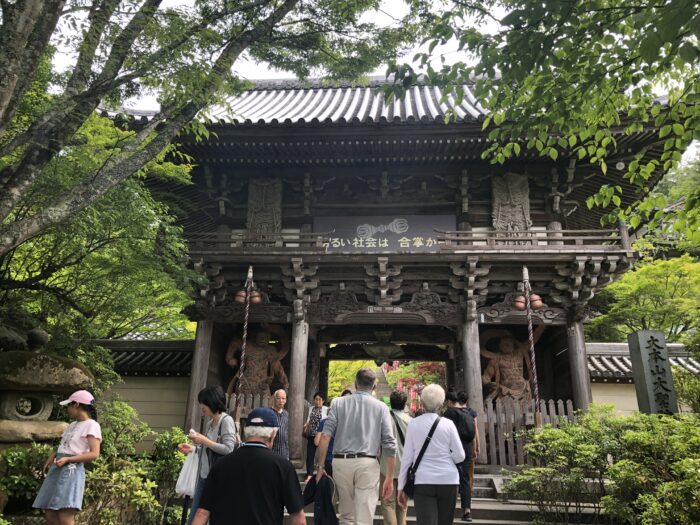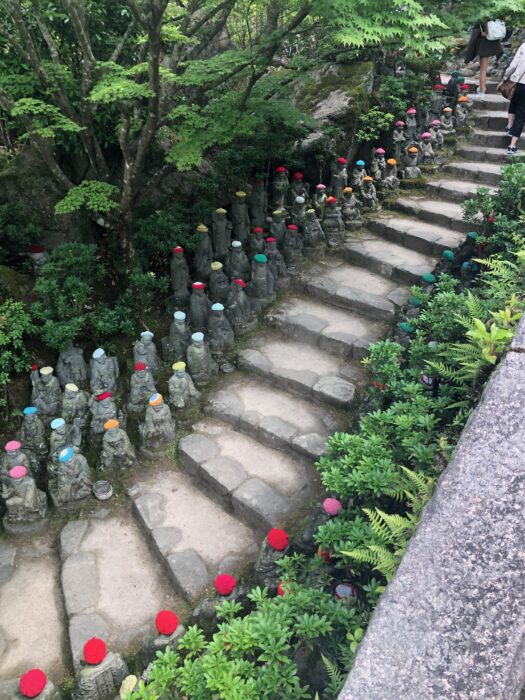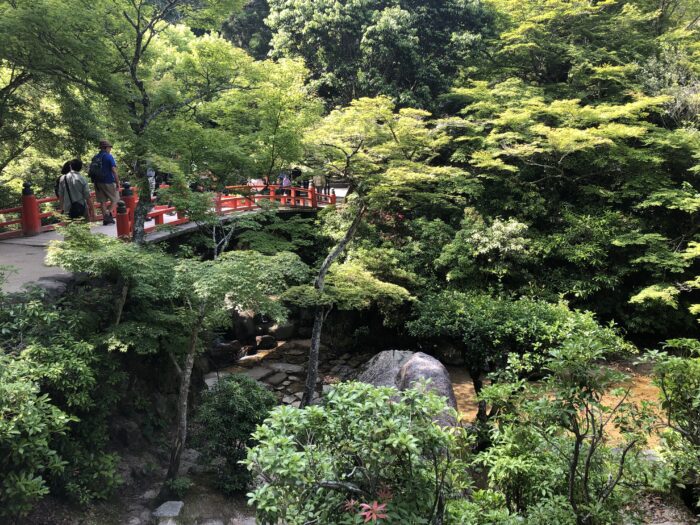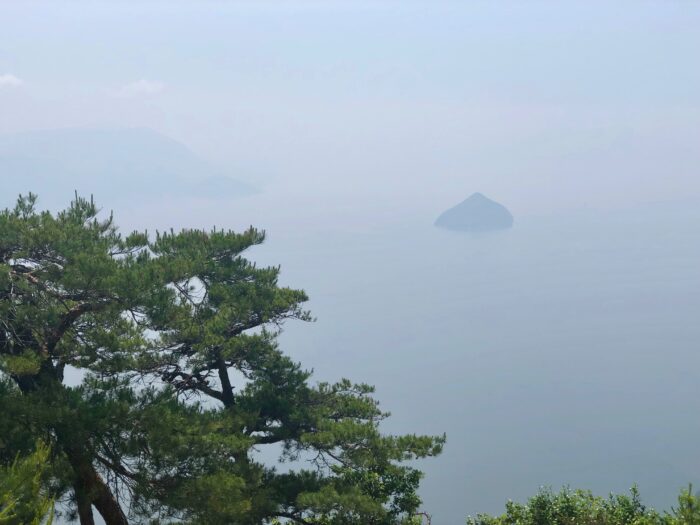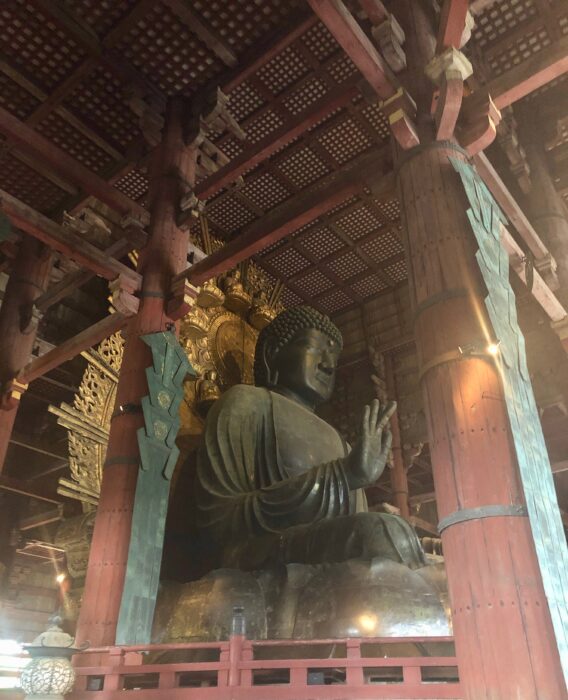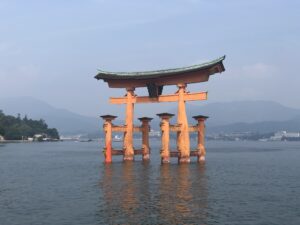
Although it’s possible to visit Japan without visiting a temple, I think its improbable since shrines can be found everywhere you look.
The Torii Gate, one of the most famous symbols of Japan, is part of the Itsukushima-jinja Shinto shrine on the Island of Miyajima. Approaching by sea at high tide, the gate is an ethereal vista that floats above the sea. In fact, the gate is 16.6 meters tall, weighs 60 tons.
Behind the Torii Gate, visitors can see Mt. Misen which is 535 meters above sea level. Together, the Torii Gate and Mt. Misen join with the Itsukushima-jinja Shrine as one unit.
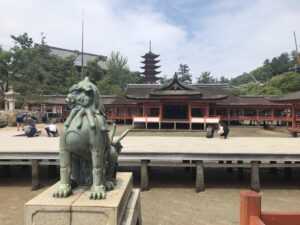
Three Munakata sea goddesses preside over the shrine: Ichikishima-hime, Tagitsu-hime, and Tagore-hime. Within the large complex, there is a Noh drama stage, music rooms, halls, and smaller shrines. The shrine and the Torii Gate are painted a vermillian color to keep evil spirits at bay.
The Daiganji Buddhist Temple is located nearby. The temple is an upslope climb, but there are bronze prayer wheels you can turn which kept my mind off the incline. Along the way I saw many small Buddhas, each with a knit cap crocheted by worshippers. I don’t know what the caps represent, but they give the statues a jaunty appearance.
In addition to shrines, temples, shops and wandering deer, visitors, both Japanese and foreign, like to climbing Mt. Misen. I thought the path was strenuous, but people of all ages and fitness levels made their way up. At one time, people believed the only “legitimate” way to climb Mt. Wisen was by foot, but in 1959, the Ropeway Cable Car was built at about the half way point. It takes hikers over the Misen primeval forest, and deposits them at a lookout area from which they can continue the hike to the summit, 535 meters above sea level. Since the day was hazy, I opted to stay at the observation point.
NARA
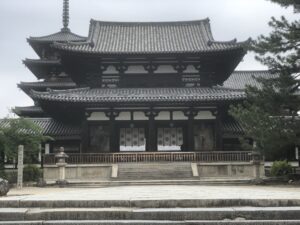
I joined hundreds (perhaps thousands?) of tourists and school children visiting two ancient temples in Nara, the former capital of Ancient Japan. Horyukji Temple is oldest wooden temple in the world, dating from the 8th century. Emperor Yomei started building as a prayer for recovery from an illness. He died before its completion, but Empress Suiko and Crown Prince Shotoku completed the work. A bronze image of the Shaka Buddha presides in the Kondo, or Main Hall.
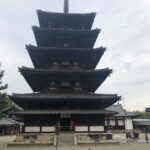
The Goju-no-To [Five Story Pagoda] is the oldest five-story pagoda in Japan and is said to contain a relic from the Buddha.
Nara is also the location of Todaiji Temple which features the largest bronze statue of Buddha in the world. Attached to the temple is a famous deer park. Vendors sell food that the deer will take out of your hand or from your lips.
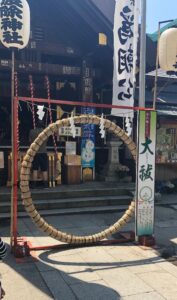
Not every temple is a large complex. The Shinowa Tsushima Shinto Shrine in the Tokyo Outer Market at Tsukiji is a shrine for fishermen with a simple ritual for good fortune. Stand in front of the circle. Bow twice. Walk through the circle and clockwise around the circle. Bow once. Walk through the circle and counterclockwise around the circle. I thought I was pretty lucky before I did the ritual, now I may have luck for life.
???
Photos by Author

Sandra Wagner-Wright holds the doctoral degree in history and taught women’s and global history at the University of Hawai`i. Sandra travels for her research, most recently to Salem, Massachusetts, the setting of her new Salem Stories series. She also enjoys traveling for new experiences. Recent trips include Antarctica and a river cruise on the Rhine from Amsterdam to Basel.
Sandra particularly likes writing about strong women who make a difference. She lives in Hilo, Hawai`i with her family and writes a blog relating to history, travel, and the idiosyncrasies of life.

